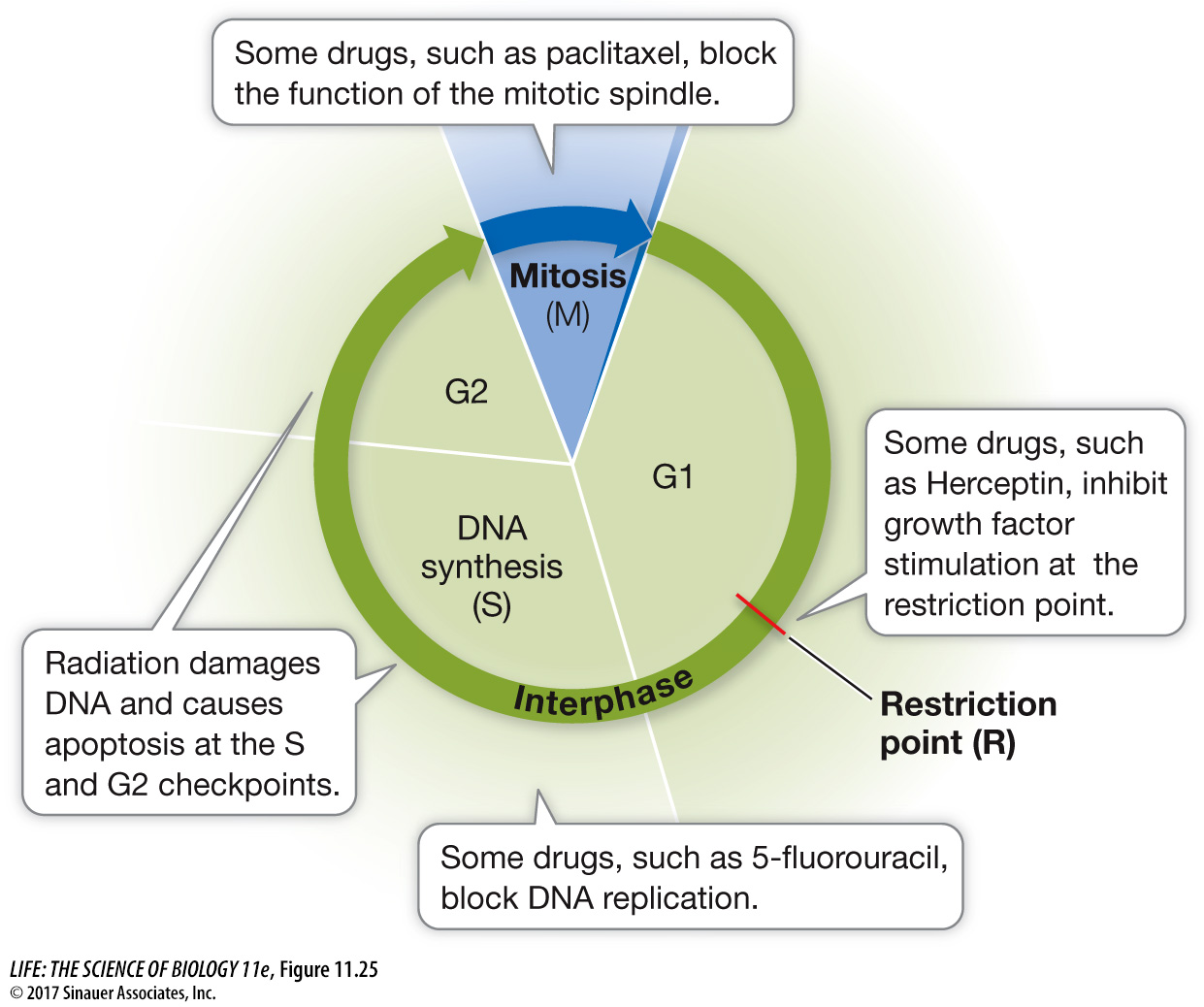Cancer treatments target the cell cycle
The most successful and widely used treatment for cancer is surgery. While physically removing a tumor is optimal, it is often difficult for a surgeon to get all of the tumor cells. (A tumor about 1 centimeter in diameter already has a billion cells!) Tumors are generally embedded in normal tissues. Added to this is the probability that cells of the tumor may have broken off and spread to other organs. This makes it unlikely that localized surgery will be curative. So other approaches are taken to treat or cure cancer, and these generally target the cell cycle (Figure 11.25). The goal is to decrease the rate of cell division and/or increase the rate of apoptosis so that the cancer cell population decreases.

Q: How do these treatments differ from treatments based on specific targets (see Figure 11.24)? Would the side effects of the two types of treatments be different?
The cell cycle treatments affect the cell cycles of all dividing cells in the body, not just those of the tumor cells. By contrast, targeted drugs affect altered proteins present only in tumor cells. The side effects of the general cell cycle drugs would be on organs and systems that rely on dividing cells. For example, blood cells undergo apoptosis after a period in the bloodstream and must be replaced by dividing cells; if division in these cells is blocked by an anticancer drug, the patient may develop side effects such as poor immunity (too few white blood cells) and anemia (too few red blood cells).
An example of a cancer drug that targets the cell cycle is 5-
A major effort in cancer research is to find treatments that target only cancer cells. A promising recent example is Herceptin, which targets the HER2 growth factor receptor that occurs at high levels on the surfaces of some breast cancer cells (see Figure 11.24A). Herceptin binds specifically to the HER2 receptor but does not stimulate it. This prevents the natural growth factor from binding and stimulating cell division. Because cell division is blocked and the apoptosis rate remains the same, the tumor shrinks.